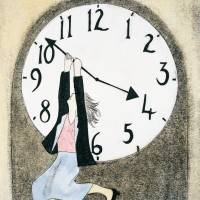January 12, 2015
Lack of flexible working options is distorting the job market for women
 UK employers and their female employees are missing out on a range of opportunities because of their failure to implement better flexible working arrangements, according to a report from The Institute for Public Policy Research (IPPR). The report examined flexible working across Europe and found that while significant progress had been made in the UK, nearly two thirds (64 percent) of working women are unable to vary their working hours and a quarter (25 percent) claim it is difficult to take one or two hours from their day at short notice. The report claims the pent up demand for such working arrangements restricts employment opportunities for women compared to men, means more women are working in jobs below their skill level and creates the conditions for extensive underemployment.
UK employers and their female employees are missing out on a range of opportunities because of their failure to implement better flexible working arrangements, according to a report from The Institute for Public Policy Research (IPPR). The report examined flexible working across Europe and found that while significant progress had been made in the UK, nearly two thirds (64 percent) of working women are unable to vary their working hours and a quarter (25 percent) claim it is difficult to take one or two hours from their day at short notice. The report claims the pent up demand for such working arrangements restricts employment opportunities for women compared to men, means more women are working in jobs below their skill level and creates the conditions for extensive underemployment.






 BBC Wales has exchanged contracts with the developer of its new 150,000 sq. ft headquarters in the centre of Cardiff. Although still subject to final planning consent and the approval of BBC executives, the building is an anchor site in the Foster + Partners masterplanned Central Square regeneration project and work is confidently expected to begin in the middle of 2015 for completion in 2017 with full occupancy expected the following year. The new building will be home to some 1,000 staff and has been targeted to achieve a BREEAM excellent rating. Developers Rightacres expect the Central Square mixed use project to provide around 1 million sq. ft of office, residential and retail space, creating one of Wales’ largest property developments and regeneration schemes in the heart of Cardiff on the site of the current bus station.
BBC Wales has exchanged contracts with the developer of its new 150,000 sq. ft headquarters in the centre of Cardiff. Although still subject to final planning consent and the approval of BBC executives, the building is an anchor site in the Foster + Partners masterplanned Central Square regeneration project and work is confidently expected to begin in the middle of 2015 for completion in 2017 with full occupancy expected the following year. The new building will be home to some 1,000 staff and has been targeted to achieve a BREEAM excellent rating. Developers Rightacres expect the Central Square mixed use project to provide around 1 million sq. ft of office, residential and retail space, creating one of Wales’ largest property developments and regeneration schemes in the heart of Cardiff on the site of the current bus station.
















November 5, 2014
Why isn’t the UK Government acting to curb the scandal of fake furniture?
by Tony Ash • Comment, Furniture, Workplace design
The real thing
If you’ve watched a DVD recently, it probably started with an advert highlighting that ‘you wouldn’t steal a handbag, so why would you steal a DVD?’ The point it’s making is that it’s unacceptable to buy poor quality copies of DVDs. They’re fake products and there’s a stigma attached to them, in the same way there’s a stigma attached to buying a fake watch, handbag or a forged piece of art. That’s how things should work, but this isn’t yet the case for fake furniture in the UK. And the reason for this is government inaction that is not only allowing a market for poorer quality replicas of iconic designs to exist, but to thrive. In April 2013 the UK government passed the Enterprise and Regulatory Reform Act, a section of which closed a loophole in British intellectual property law. Under the new regulations, artistic designs for products such as furniture would be protected for up to 70 years after the designer’s death. Before the Act was passed, if more than 50 copies of a design were made, it was considered to be mass produced and was subject to only 25 years’ protection.
(more…)